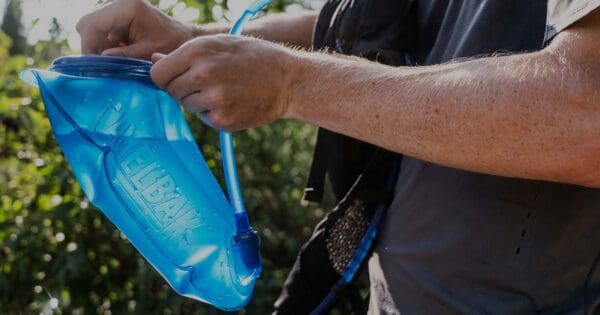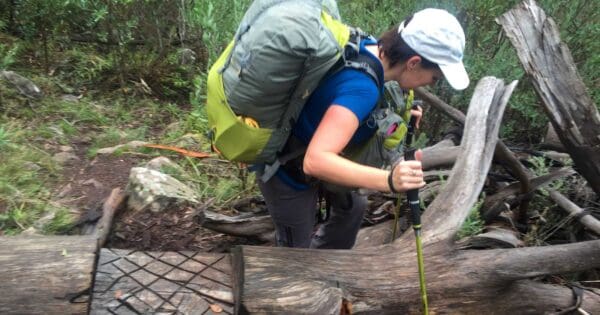Having quality hiking gear is essential for safe and enjoyable hiking experiences. The specific gear you’ll need will depend on the type of hike, terrain, climate, and duration of your trip. Having the right gear can enhance your safety and comfort while hiking, so it’s important to invest in the best quality gear you can afford to be better prepared for the specific conditions of your hike. You don’t need to have buy expensive gear to go hiking. Start with the most essential items, such as appropriate footwear, weather-appropriate clothing, water, and food. You can gradually acquire additional gear as your budget allows.
Consider the basics
Here are a few basic items that are generally recommended for most hikes. It’s also worth checking out the Ten Essentials that hiking and Scouting organisations recommend for safe travel in the bush.
Appropriate Clothing: Dress in layers and wear moisture-wicking, quick-drying fabrics. Bring rain gear, a hat, sunglasses, and extra socks. Choose footwear that is comfortable, sturdy, and appropriate for the terrain.
Navigation tools: Carry a map and compass or a GPS device to help you navigate the trail. Familiarise yourself with the trail route before setting out.
Sun Protection: Wear sunscreen, sunglasses, and a hat to protect yourself from the sun’s harmful rays.
Adequate food and water: Bring enough food and water to sustain yourself for the duration of your hike. Pack high-energy snacks, such as nuts and dried fruits, and carry a water bottle or hydration system to stay hydrated.
First aid kit: Carry a basic first aid kit that includes bandages, gauze, antiseptic wipes, and any personal medications you may need.
Emergency shelter: Carry a lightweight emergency shelter, such as a space blanket or bivvy sack, in case of unexpected weather changes or emergencies.
Lighting: Bring a headlamp or flashlight with extra batteries for hiking in low-light conditions or during overnight trips.
Multi-purpose tool: Carry a multi-tool or knife for various purposes, such as cutting rope or repairing gear.
Communication devices: Bring a fully charged cell phone, a whistle, or other communication devices for emergencies.
Other essentials: Pack insect repellent, a hat, camera, and any other items specific to your needs or the trail you’ll be hiking.
What if I can’t afford the best gear?
If you’re unable to afford all the necessary hiking gear, there are still some options you can consider:
- Borrow or rent gear: Check with friends, family, or fellow hikers to see if you can borrow or rent gear. Many outdoor gear stores or adventure outfitters offer gear rental services at a lower cost than purchasing new gear.
- Buy used gear: Look for used gear at outdoor gear shops, thrift stores, online marketplaces, or gear exchange groups. Used gear can be more affordable and still functional for hiking, especially for beginner-level hikes.
- Prioritise your safety: While it’s important to stay within your budget, prioritise safety gear such as appropriate footwear, rain gear, and navigation tools. These items are critical for your safety and well-being while hiking.
- Save and budget: Set aside money specifically for hiking gear and gradually save up to purchase essential items over time. Create a budget and prioritise gear purchases based on their importance for your hiking trips.
- Take advantage of sales and discounts: Keep an eye out for sales, discounts, or clearance events at outdoor gear stores or online retailers. You may find good deals on hiking gear during off-seasons or special promotions.
- Look for budget-friendly Alternatives: Research and compare prices to find budget-friendly alternatives for hiking gear. There are often more affordable alternatives available, such as lower-priced brands or older models that still provide adequate functionality.
- DIY and make your own gear: In some cases, you may be able to make your own gear, such as a homemade first aid kit or a DIY backpack. There are many online resources and tutorials available for creating your own gear at a lower cost.
- Join outdoor communities: Join online forums, social media groups, or local hiking clubs to connect with other hikers. They may offer advice, recommendations, or even used gear for sale or trade at a lower cost.
- Make a Gear Wish List: Create a wish list of hiking gear and prioritize the items based on their importance. Save up and purchase items one at a time as your budget allows.
Remember, while having the right gear is important for hiking safety and comfort, it’s also important to prioritise your budget and make wise choices based on your financial situation. Focus on acquiring essential items first and gradually build your gear collection over time. Safety should always be a top priority, so make sure to at least have the most essential gear for your hikes.
While investing in quality hiking gear is important, it’s also possible to start with the basics and gradually build your gear collection over time. Hiking can be a wonderful outdoor activity that offers many health benefits and opportunities for adventure, and with careful planning and budgeting, you can still enjoy it even on a limited budget.






Great advice as usual.
I sometimes also suggest to those new to hiking, do easy hikes that are circuit based around where they’ve parked their car. You Yangs is a great example.
Use this as a work up to bigger and more hard core hikes, and in the process test their kit.
If anything goes wrong, it’s not catastrophic. The walk back to the car won’t kill them…
Unless they have terrible shoes.
Don’t scrimp on shoes or socks. 😂
Murky Murk that’s also very wise advise.
Great advice!!